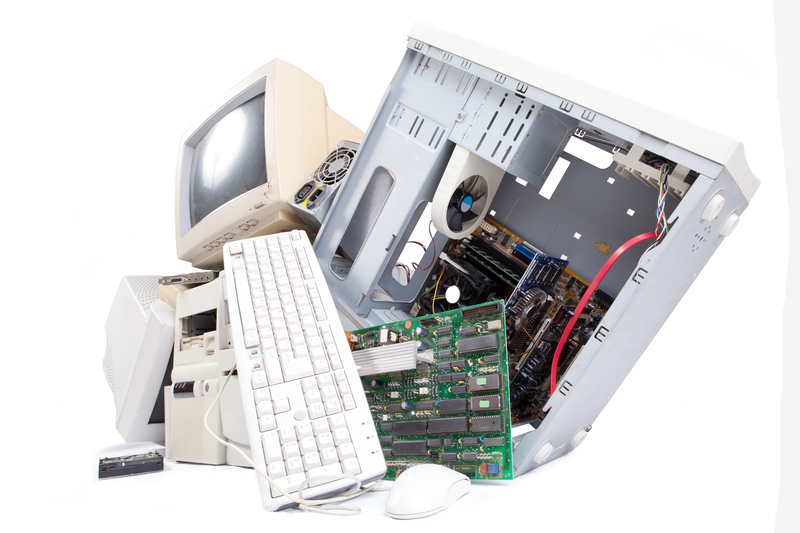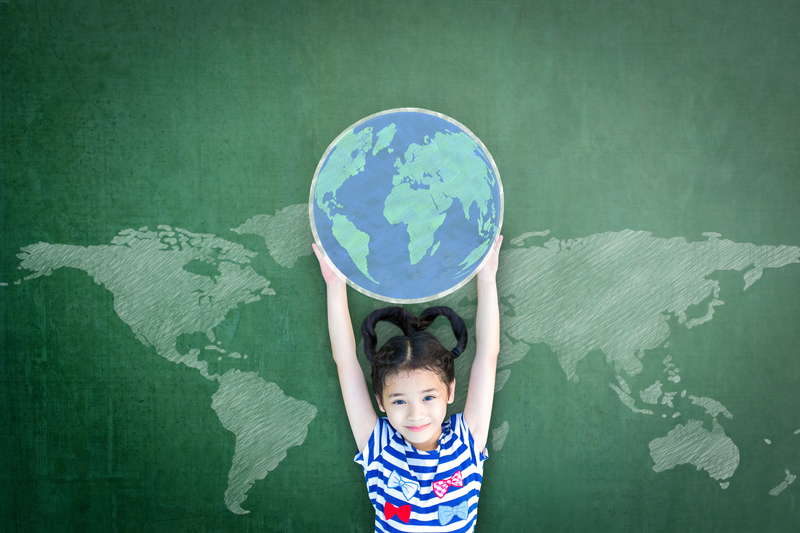How Responsible PPE Waste Disposal Helps Fight Pollution
Personal protective equipment (PPE) has become a staple in daily life, especially in the aftermath of the COVID-19 pandemic. Products like masks, gloves, face shields, and gowns have helped millions stay protected. However, as usage grows, so does the challenge of managing PPE waste responsibly. This comprehensive article delves into how responsible PPE waste disposal can play a crucial role in combating environmental pollution and emphasizes the importance of sustainable practices.

Understanding PPE Waste and Its Environmental Impact
The Surge in PPE Waste
The global response to health emergencies has led to a dramatic increase in single-use personal protective equipment. According to recent studies, the world used an estimated 129 billion face masks and 65 billion gloves monthly during the peak of the COVID-19 pandemic. A substantial portion of this PPE ends up in landfills, water bodies, and urban landscapes, significantly contributing to pollution.
Problems Associated with Improper PPE Disposal
- Plastic Pollution: Most PPE items are made from non-biodegradable plastics like polypropylene. Improper disposal results in long-term environmental harm.
- Microplastic Generation: Discarded PPE breaks down into microplastics, contaminating soil and water resources.
- Health Hazards: Used PPE can carry infectious agents, posing risks to waste handlers, wildlife, and the general public.
- Marine Pollution: PPE waste often makes its way to oceans, threatening aquatic life and ecosystems.
- Visual Pollution: Littered masks and gloves reduce the aesthetic value of public areas and communities.
Why Responsible PPE Waste Disposal Matters
Protecting Human Health
Safe and responsible PPE waste disposal protects communities from exposure to infectious agents. Proper containment and treatment of waste reduce the risk of disease transmission among sanitation workers and the broader population.
Minimizing Environmental Pollution
By ensuring responsible disposal, we limit the entry of non-biodegradable plastics into landfills, rivers, and oceans. This mitigates soil and water contamination, reduces microplastic pollution, and helps maintain ecosystem balance.
Supporting Circular Economy Principles
Responsible PPE waste management encourages recycling and recovery, promoting the circular economy and reducing resource consumption. Proper sorting and processing enable the transformation of waste into valuable secondary materials.
Best Practices for PPE Waste Disposal
1. Segregation at Source
- Households and businesses should set up separate bins for PPE waste to facilitate safe handling and effective processing by waste collection agencies.
- Clear labels and color-coded containers help prevent cross-contamination with general waste streams.
2. Proper Containment
- Seal used PPE in sturdy, leak-proof bags to prevent spills and contact with waste handlers.
- For potentially infectious waste, use double-bagging and clearly label the packages as "biohazard" when required.
3. Specialized Collection and Disposal Services
- Utilize authorized collection services for medical and hazardous waste. Many regions have dedicated programs for handling PPE waste from healthcare providers and the public.
- Investigate local drop-off points or scheduled pickups for PPE waste.
4. Incineration and Advanced Treatments
- High-temperature incineration is a common method for destroying pathogens and reducing the volume of PPE waste.
- Emerging technologies like pyrolysis and chemical recycling are being explored to process PPE waste into fuels or reusable materials, minimizing landfill burden.
5. Public Education and Awareness
- Raising awareness through campaigns, signage, and instructions helps encourage responsible PPE waste disposal at all community levels.
- Schools, businesses, and governments should incorporate PPE waste education into broader sustainability initiatives.
How Responsible PPE Disposal Helps Fight Pollution
Proper PPE waste disposal is not merely a matter of compliance; it is a pivotal strategy in fighting pollution at multiple levels. Below, we outline the primary ways that responsible practices contribute to a cleaner and safer environment.
1. Reducing Landfill Accumulation
PPE materials like masks and gloves take hundreds of years to decompose. By diverting PPE waste from regular trash to specialized disposal channels, we cut down on the amount of non-biodegradable material clogging landfills and leaching chemicals into the soil.
2. Preventing Waterway Contamination
Studies have shown that up to 10% of urban litter during the pandemic consisted of PPE items. When mismanaged, these items are easily blown or washed into rivers and oceans, contributing to marine debris and affecting aquatic life. Responsible PPE waste disposal keeps these hazardous items out of waterways, mitigating their contribution to global water pollution.
3. Reducing Health Risks to Humans and Animals
Wildlife often mistake discarded PPE for food, leading to ingestion, suffocation, or entanglement. Birds, turtles, and marine mammals are particularly vulnerable. Additionally, failing to contain infectious PPE can expose communities to harmful pathogens. Properly disposing of PPE waste safeguards both human health and biodiversity.
4. Enabling Waste-To-Energy and Recycling Innovations
- Advanced facilities can convert plastic-based PPE waste into energy or raw materials. This process recovers value from waste while reducing reliance on fossil fuels and virgin plastics.
- Responsible disposal is the first step in ensuring that waste can be efficiently processed into reusable resources rather than being lost to the environment.
5. Supporting Global Pollution Reduction Goals
The United Nations' Sustainable Development Goals (SDGs) emphasize clean water, healthy ecosystems, and responsible consumption and production. Responsible PPE waste management directly aligns with these global pollution targets and highlights how individual actions contribute to worldwide efforts.
Challenges in PPE Waste Management
Volume and Complexity
The scale of PPE waste generated daily is unprecedented. Most facilities were not designed to handle such specialized waste, creating processing bottlenecks and capacity issues.
Safety and Contamination Concerns
Used PPE, especially from medical facilities and quarantine sites, poses serious biohazard risks. Added precautions increase operational costs and complexity.
Lack of Public Awareness
Not everyone is aware of how to dispose of PPE responsibly. Mixed messaging, confusing guidelines, and inadequate infrastructure often lead to improper disposal.
Regulatory and Infrastructure Gaps
Developing countries and rural areas may lack clear regulations or resources for effectively gathering and processing PPE waste, increasing pollution risks.
Innovative Solutions for Responsible PPE Waste Disposal
Biodegradable and Recyclable PPE
- Researchers and manufacturers are exploring eco-friendly PPE alternatives made from biodegradable materials like cornstarch, bamboo, or recycled paper.
- Incorporating recycling-friendly design makes it easier to recover and repurpose materials, reducing plastic waste.
Infrastructure Investment
- Upgrading waste management systems to include dedicated PPE sorting, collection, and treatment units increases efficiency and safety.
- Partnerships between governments, manufacturers, and NGOs can bridge funding and technology gaps, especially in under-resourced regions.
Policy and Regulation
- Clear laws and standards for PPE waste disposal ensure compliance and encourage innovation in sustainable handling methods.
- Government initiatives can incentivize research, eco-design, and community education to close the loop on PPE waste.
Community Involvement and Corporate Responsibility
- Schools, workplaces, and community groups can lead local PPE waste drives and education campaigns, instilling a culture of responsibility.
- Businesses, especially those in healthcare and retail, can offer PPE recycling stations and sponsor public awareness initiatives.
Steps Individuals Can Take for Responsible PPE Waste Disposal
- Use Reusable PPE: Where possible, opt for washable masks and gloves to minimize single-use waste.
- Follow Local Guidelines: Always check your municipality's rules on PPE waste collection and handling.
- Dispose Safely: Seal used PPE in designated bins or bags, keeping them away from pets and wildlife.
- Educate Others: Share information about responsible PPE disposal among family, friends, and colleagues.
- Participate in Clean-Ups: Join or organize community efforts to remove littered PPE from parks, waterways, and public spaces.

The Future of PPE Waste Management
The pandemic has underscored our interconnectedness and the importance of safeguarding both public health and the environment. As we look ahead, the integration of smarter waste systems, eco-friendly materials, and robust educational efforts will shape a more sustainable approach to PPE waste. Governments, businesses, and individuals all play a vital part in ensuring that the benefits of personal protection do not come at the expense of our planet.
Conclusion: Responsible PPE Waste Disposal as a Pollution Solution
Responsible PPE waste disposal is an essential strategy in the broader fight against environmental pollution. By promoting proper practices, investing in advanced waste solutions, and building widespread awareness, we can reduce the risks associated with PPE pollution. Every mask, glove, or gown that is correctly handled is one less item harming our planet. Together, through informed and responsible action, we can transform the PPE waste challenge into an opportunity for environmental stewardship and a healthier world.
By following best practices in PPE waste management, supporting innovation, and fostering a culture of responsibility, we all can make a measurable difference in protecting our environment for future generations.
